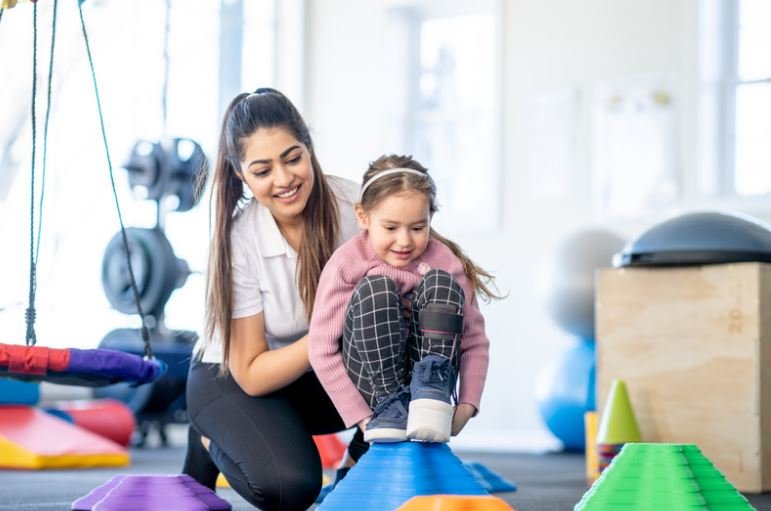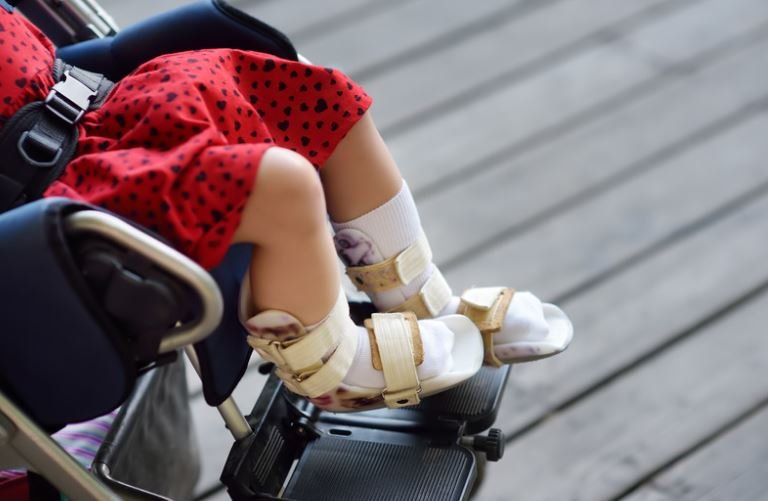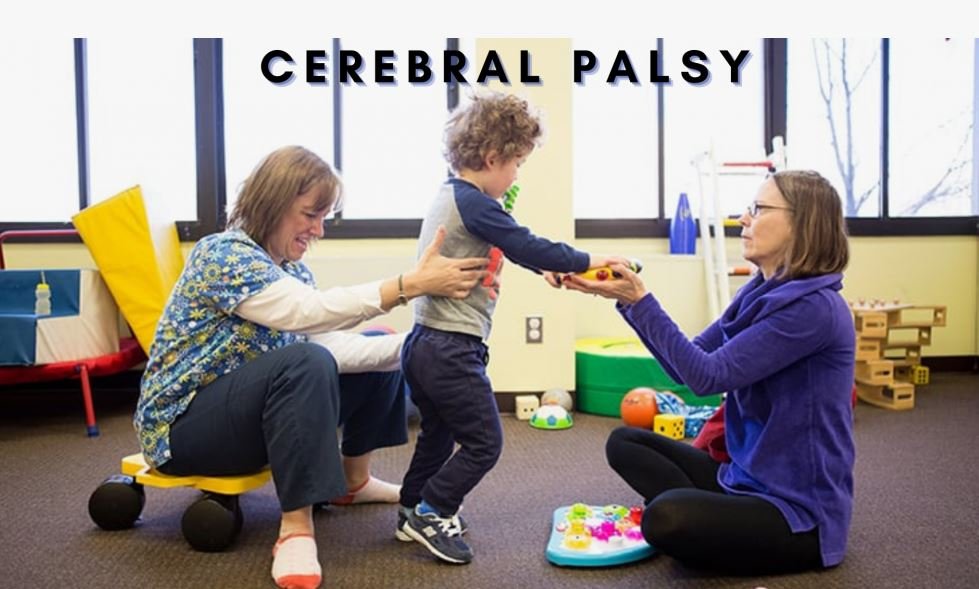Cerebral palsy (CP) is a neurological disorder that affects movement, muscle tone, and posture. For children with cerebral palsy, physical therapy is a crucial part of managing the condition and improving mobility and overall quality of life. A tailored physical therapy program can help children with CP gain strength, coordination, and independence in their daily activities. In this blog, we’ll explore the physical therapy approach for children with cerebral palsy, highlighting the techniques used and when to seek professional help.
The Role of Physical Therapy in Cerebral Palsy Management
Physical therapy (PT) plays a central role in the treatment and management of cerebral palsy. While cerebral palsy itself cannot be cured, PT helps manage the symptoms by focusing on improving motor skills, muscle strength, and coordination. Early intervention through physical therapy can prevent secondary complications, such as joint contractures, muscle tightness, and difficulty with balance and mobility.
Goals of Physical Therapy for Children with Cerebral Palsy

The goals of physical therapy vary depending on the severity and type of cerebral palsy, as well as the child’s specific needs. Some key objectives include:
- Improving mobility: Enhancing a child’s ability to walk, stand, and move independently or with assistance.
- Increasing strength and flexibility: Developing muscle strength and improving flexibility to allow better control of movement.
- Enhancing balance and coordination: Helping children improve their posture, balance, and overall coordination to reduce the risk of falls.
- Promoting independence: Encouraging children to engage in daily activities with greater autonomy.
- Preventing complications: Reducing the risk of muscle contractures, deformities, or joint issues that can arise without regular movement and therapy.
Physical Therapy Techniques for Children with Cerebral Palsy
Physical therapy for children with cerebral palsy involves various techniques designed to target specific motor challenges. These techniques are typically customized based on the child’s needs and functional abilities. Below are some of the common physical therapy approaches used for children with CP:
1. Stretching and Strengthening Exercises
Stretching and strengthening exercises are foundational techniques in physical therapy. Stretching helps to increase flexibility and prevent muscle tightness, while strengthening exercises build muscle power to support better movement and posture.
- Stretching Exercises: These focus on lengthening tight muscles, which is particularly important for children with spastic cerebral palsy, where muscle stiffness is common.
- Strengthening Exercises: Activities like standing exercises, leg lifts, or resistance training can help children develop stronger muscles, allowing them to support their body weight and improve mobility.
When to Call a Professional:
If your child is experiencing frequent muscle tightness or stiffness that limits their range of motion, consulting a professional physical therapist is essential. They can design a stretching and strengthening program that targets specific areas in need of improvement.
2. Gait Training
Gait training focuses on helping children with cerebral palsy improve their walking patterns. Some children with CP may walk with an abnormal gait due to muscle tightness, weakness, or imbalances. Gait training helps children correct these issues and walk more efficiently.
- Use of Assistive Devices: Gait training often incorporates the use of assistive devices like walkers, braces, or orthotics to help support the child’s posture and movement during walking.
- Balance and Coordination Activities: These exercises help improve stability and coordination while walking, reducing the risk of falls.
When to Call a Professional:
If your child has difficulty walking or requires significant support, it’s important to consult a physical therapist who specializes in gait training. They can recommend the right assistive devices and techniques to improve walking.
3. Balance and Coordination Exercises
Balance and coordination are often affected in children with cerebral palsy, making activities like standing, walking, or transitioning between movements more difficult. Physical therapy incorporates exercises designed to improve these areas, helping children gain better control over their movements.
- Balance Training: Activities like standing on uneven surfaces or walking on balance beams help develop stability.
- Coordination Drills: Catching and throwing balls or obstacle courses are used to improve coordination between the upper and lower body.
When to Call a Professional:
If your child struggles with balance or frequently falls, a physical therapist can assess their coordination abilities and develop a tailored exercise program to improve stability and prevent injury.
4. Posture and Alignment Therapy
Children with cerebral palsy may develop poor posture due to muscle imbalances and motor control issues. Posture and alignment therapy helps to correct these issues by focusing on proper body mechanics and core strengthening exercises.
- Core Strengthening Exercises: A strong core helps improve overall posture, making it easier for children to sit, stand, and move with proper alignment.
- Posture Correction Techniques: Therapists work with children to maintain proper posture during activities, which can reduce strain on the muscles and joints.
When to Call a Professional:
If your child has noticeable posture issues or struggles with sitting or standing upright, a physical therapist can help with posture correction and strengthening techniques to support better alignment.
5. Functional Mobility Training
Functional mobility training helps children with cerebral palsy learn how to perform daily tasks, such as moving from sitting to standing, transferring in and out of a chair, or navigating stairs. This type of therapy aims to improve the child’s ability to participate in everyday activities with greater independence.
- Task-Oriented Exercises: The child practices specific movements required for daily activities, such as standing up from a seated position or walking up steps.
- Repetition and Practice: Functional mobility training involves repeated practice to help the child master movements and integrate them into their daily routine.
When to Call a Professional:
If your child has difficulty performing everyday tasks such as getting dressed, sitting down, or moving around the house, a physical therapist can provide functional mobility training to improve independence.
6. Aquatic Therapy
Aquatic therapy is a popular option for children with cerebral palsy because water provides resistance while reducing the impact on the joints and muscles. The buoyancy of water supports the child’s body, making it easier to perform movements that might be challenging on land.
- Strength and Endurance Training: Aquatic exercises help build strength and endurance with minimal strain on the body.
- Improved Range of Motion: Water allows for greater freedom of movement, helping children improve flexibility and range of motion.
When to Call a Professional:
If your child experiences significant muscle stiffness or pain during land-based therapy, aquatic therapy may be a good alternative. Consulting a professional physical therapist who specializes in aquatic therapy can ensure that your child benefits from a customized water-based exercise plan.
The Importance of Early Physical Therapy Intervention
For children with cerebral palsy, early intervention in physical therapy can make a significant difference in long-term outcomes. Starting therapy at a young age allows children to develop the motor skills needed for greater independence as they grow older. Early therapy can also prevent the development of muscle contractures, joint deformities, and other complications associated with a lack of mobility.

The Benefits of Ongoing Physical Therapy
Physical therapy is not a one-time intervention; it is a continuous process that evolves with the child’s needs. As children grow, their therapy programs are adjusted to meet new challenges and goals. Consistent therapy helps maintain the progress made, prevent regression, and support the child’s evolving physical abilities.
When to Seek Professional Help from a Physical Therapist
If your child has cerebral palsy and struggles with movement, mobility, or motor control, it’s important to seek professional help from a physical therapist. A licensed physical therapist will evaluate your child’s condition, recommend appropriate therapy techniques, and develop a customized program that addresses their specific needs.
Signs that your child may benefit from physical therapy include:
- Difficulty walking or standing without assistance.
- Frequent falls or trouble balancing.
- Muscle stiffness, tightness, or pain that limits movement.
- Delayed motor skill development compared to other children of the same age.
- Difficulty performing daily tasks such as dressing, sitting, or transitioning between movements.
A physical therapist can provide expert guidance on exercises, assistive devices, and therapy techniques to support your child’s physical development and improve their quality of life.
Physical therapy is an essential component of managing cerebral palsy, offering children the opportunity to improve mobility, strength, and independence. From stretching exercises to aquatic therapy, there are various approaches that can be tailored to each child’s needs. Early intervention and ongoing therapy help ensure that children with cerebral palsy can reach their full potential and participate more fully in daily activities.
If you’re concerned about your child’s motor skills or overall mobility, it’s important to consult a professional physical therapist. With expert help, your child can benefit from a personalized therapy program that enhances their physical abilities and promotes a higher quality of life.







